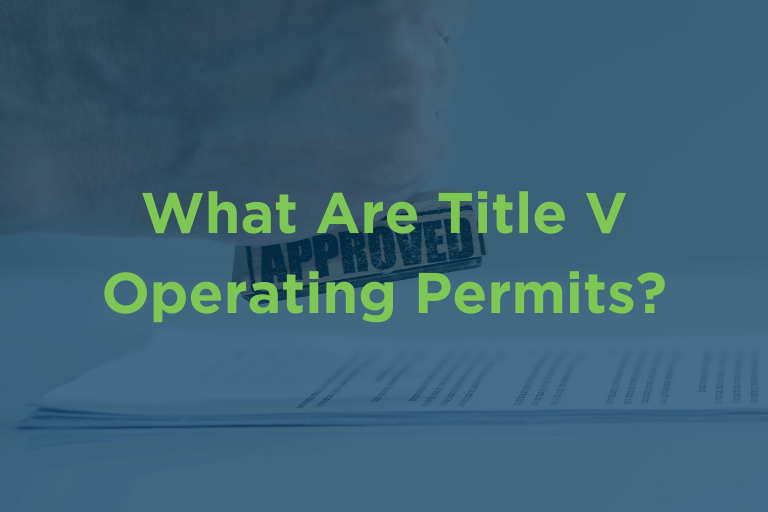Overview of Title V Operating Permits
Air operating permits are legally enforceable documents that are designed to improve compliance by outlining and clarifying what facilities must do to control air pollution. These permits are required by Title V of the Clean Air Act Amendments (CAAA), established by Congress in 1990.
Who Must Obtain a Title V Operating Permit?
There are a variety of facilities and sources that are required to obtain a Title V Operating Permit:
Major Sources
The U.S. Environmental Protection Agency requires that any facility with a “Major Source” for emissions must obtain a Title V Permit. An emission source is considered a Major Source if the estimated emissions for the six Criteria Air Pollutants — carbon monoxide (CO), lead (Pb), nitrogen oxides (NOx), sulfur dioxide (SO2), particulate matter (PM), and ground-level ozone (O3) — add up to and exceed 100 tons per year (a source that does not reach this threshold is considered a “Minor Source”).
Acid Rain Rules “Affected Sources”
The Acid Rain Program (ARP) (40CFR Part 75) was created to reduce the amount of SO2 and NOx produced by fossil fuel-fired power plants. Any emission source under Acid Rain rules must also obtain a Title V Permit, regardless of size (major source or not).
Solid Waste Incineration Units under Section 129
Clean Air Act Section 129 Guidelines and Standards for Waste Management outlines the types of waste incineration units and their respective regulations. All solid waste incineration units listed under Section 129 are subject to Title V Permits – regardless of size – including:
- Municipal waste combustors (large and small)
- Hospital/medical/infectious waste incinerators
- Commercial and industrial solid waste incinerators
- Other solid waste incinerators
- Sewage sludge incinerators
Non-major Sources Subject to National Emissions Standards for Hazardous Pollutants (NESHAP) and New Source Performance Requirements (NSPS)
The National Emission Standards for Hazardous Pollutants (NESHAP) (40CFR Part 61 & 63) and the New Source Performance Requirements (NSPS) (40CFR Part 60) are stationary source standards for air pollutants. Any source — major or non-major– subject to NESHAP or NSPS is required to obtain a Title V Permit in order to operate.
How Do I Obtain a Title V Permit for My Facility?
If your facility is required to obtain a Title V Permit, you should contact your state or local air pollution agency.
- Once you apply for a Title V Permit, the EPA has 45 days to review the proposal and submit changes based on adherence to the CAA.
- Your proposal’s commentary is then opened to the public for 30 days.
- Once the EPA has reviewed the proposal and any public commentary, it will accept or reject the Permit.
- If your permit is accepted, the public is given a 60-day complaint period.
- If the permit is rejected, you will have 90 days to revise and resubmit the proposal.
Title V Operating Permits must be renewed every five years, during which time your facility must demonstrate compliance within the permit conditions through the monitoring and reporting of emissions data.
Depending on your permit requirements, you may need to monitor emissions by the hour or even by the minute. In this case, a Continuous Emissions Monitoring System (CEMS) would be necessary for compliance.
How Can ESC Spectrum Help You Comply With Your Title V Permit?
ESC Spectrum can help you comply with your Title V Permit at every step of the way with a full suite of CEMS and DAS products and services. Contact Us today to learn how we can best help you.
Interested in learning more about regulations and staying in compliance? Read our Definitive Guide to Air Emissions Regulations.


